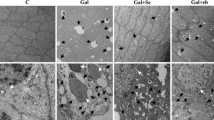Abstract
In most types of experimentally induced cataracts, glutathione (GSH) content decreases considerablybefore the onset of opacity. GHS may provide a protective function for protein SH groups by scavenging oxidative products that may impair lens metabolism. To avoid impairment of lens metabolism by decreased levels of GSH it may be possible in vitro: (1) to stimulate GSH synthesis by enrichment of the incubation medium with the amino acids necessary for GSH synthesis or (2) to enrich the incubation medium with the tripeptide itself so that it can be taken up by the lens.
Both approaches were investigated with bovine lenses. Lenses were incubated in pairs in a salt solution without carbohydrates, so as to deplete lens of GSH. Following starvation, one lens of each pair was incubated for recovery in TCM 199 enriched with MgSO4 and the three amino acids of GSH; the other lens was put into a freshly prepared salt solution. After 6 h, lenses from the recovery solution contained more GSH than the other lenses. Addition of fructose-1,6-diphosphate to the medium enhanced this effect. When, after starvation, lenses were incubated in the presence of different amounts of GSH, GSH lens content rose, with the highest in those lenses incubated in a medium with a final molarity of 4 × 10−3M GSH. Therefore, incubation of lenses depleted of GSH in medium with either the amino acids of GSH or GSH itself appear to facilitate recovery of GSH content.
Similar content being viewed by others
References
Bernt E, Bergmeyer HU (1974) Glutathion. In: Methoden der enzymatischen Analyse, Vol 2, 3rd edn. Verlag Chemie, Weinheim, pp 1688–1692
Giblin FJ, Nies DE, Reddy VN (1981) Stimulation of the hexosemono-phosphate shunt in rabbit lens in response to the oxidation of glutathione. Exp Eye Res 33: 289–298
Hagenah J (1983) Der Einstrom von Glutathion in die Linse, untersucht an inkubierten Rinderlinsen und an der isolierten Rinderlinsenkapsel. Dissertation, Bonn
Harding JJ, Dilley KJ (1976) Structural proteins of the mammalian lens: a review with emphasis on changes in development, aging and cataract. Exp Eye Res 22: 1–73
Hata N (1979) Der Gehalt an reduziertem und oxidiertem Glutathion in Rinderlinsen in Abhängigkeit vom Lebensalter, Lokalisation und nach verschiedenen experimentellen Beeinflussungen. Dissertation, Bonn
Hata N, Hockwin O (1977) Enzymatic determination of reduced and oxidized glutathione in bovine lenses of different ages and their distribution in lens equator and nucleus. Ophthalmic Res 9: 256–262
Hockwin O, Hata N (1978) Veränderungen im Gehalt an reduziertem und oxidiertem Glutathion bei Inkubation von Rinderlinsen. Graefe's Arch Clin Exp. Ophthalmol 206: 151–155
Hockwin O, Korte I, Breuer R, Schmidt G, Rast-Czyborra F (1978) In vitro Inkubation von Linsen. Modell zur Untersuchung der Substratverwertbarkeit von Substanzen für den Energiestoffwechsel am Beispiel des Bencyclan-hydrogenfumarats. Graefe's Arch Clin Exp Opthalmol 207: 169–180
Hockwin O, Korte I, Noll E, Licht W (1983) Enhancement of the stimulating effect of fructose-1.6-diphosphate on the metabolic energy balance of carbohydrate-deficient bovine lenses by additional supply with ADP. Ophthalmic Res 15: 168–171
Hockwin O, Poonawalla N, Noll E, Licht W (1973) Durchlä ssigkeit der isolierten Rinderlinsenkapsel für Aminosäuren und wasserlösliche Eiweiße. Graefe's Arch Clin Exp Ophthalmol 188: 175–181
Hurtado R (1984) Untersuchungen zur Penetration von Glutathion durch die Linsenkapsel am Modell der Rinderlinse. Dissertation, Bonn
Konopka R (1982) In vitro Untersuchungen über die Normalisierung des Glutathionsgehaltes in Rinderlinsen, Einfluß von Antioxidantien und verschiedenen Substratangeboten. Dissertation, Bonn
Korte I, Hockwin O (1980) The effect of fructose-1.6-diphosphate and other metabolites on substrate-deficient lenses in vitro. In: Regnault F, Hockwin O, Courtois Y (eds) Ageing of the lens. Elsevier/North Holland Biomedical Press, Amsterdam, New York, Oxford, pp 291–299
Korte I, Hockwin O, Kaskel D (1979) Utilization of fructose-1.6-diphosphate as glycolytic substrate in bovine lens homogenates. Doc Ophthalmol Proc Ser 18: 163–173
Merriam F, Kinsey VE (1950) Studies on the crystalline lens. Technic for in vitro culture of crystalline lens and observations on metabolism of the lens. Arch Ophthalmol 43: 979–988
Rathbun WB (1976) Lens glutathione, metabolism and possible functions. Doc Ophthalmol Proc Ser 8: 145–152
Rathbun WB (1981) Glutathion: Biosynthese und Funktionen in der Linse. In: Regnault F (ed) Symposiumüber die Augenlinse, Montpellier 1980. Excerpta Medica, Amsterdam, Oxford, Princeton, pp 38–55
Rathbun WB (1982) Biosynthese des Glutathion in der Linse. In: Hockwin O (ed) Altern der Linse. Symposium über die Augenlinse, Strasbourg 1982. Mayr Miesbach, pp 169–174
Reddy VN, Varma SD, Chakrapani B (1973) Transport and metabolism of glutathione in the lens. Exp Eye Res 16: 105–114
Reddy VN, Giblin FJ, Matsuda H (1980) Defense system of the lens against oxydative damage. In: Srivastava Sk (ed) Red blood cell and lens metabolism. Developments in biochemistry, Vol 9. Elsevier, North Holland, pp 139–154
Sippel TO (1966) Changes in the water, protein and glutathione contents of the lens in the course of galactose cataract development in rats. Invest Ophthalmol 5: 568–575
Van Heyningen R, Pirie A, Boag JW (1954) Changes in lens during the formation of x-ray cataract in rabbits. 2. Biochem J 56: 372–379
Varma SD, Srivastava SK, Richards RD (1982) Photoperoxidation in lens and cataract formation: preventive role of superoxide dismutase, catalase and vitamin C. Ophthalmic Res 14: 167–175
Author information
Authors and Affiliations
Rights and permissions
About this article
Cite this article
Hockwin, O., Korte, I., Noll, E. et al. Is it possible to maintain a normal glutathione level in lenses in vitro?. Graefe's Arch Clin Exp Ophthalmol 222, 142–146 (1985). https://doi.org/10.1007/BF02173539
Received:
Issue Date:
DOI: https://doi.org/10.1007/BF02173539




